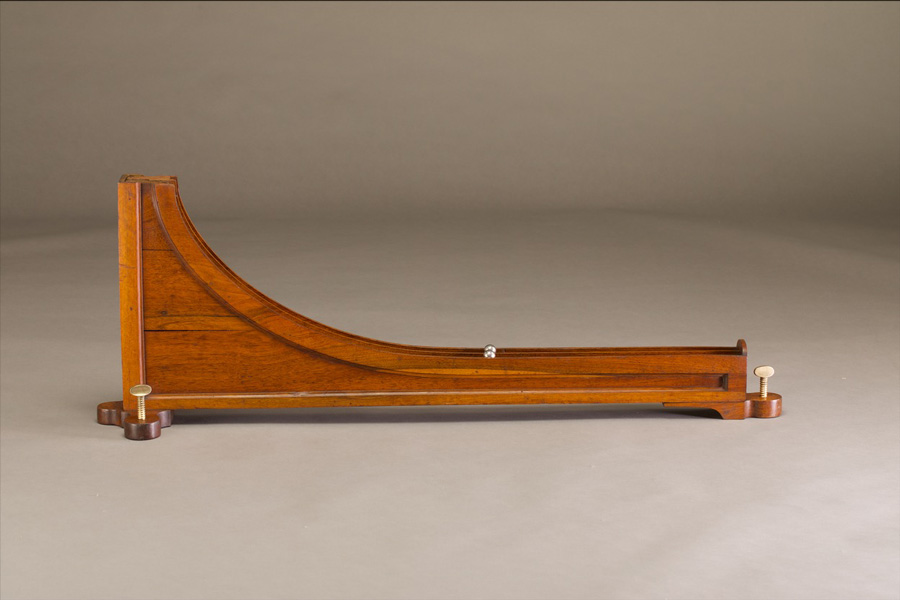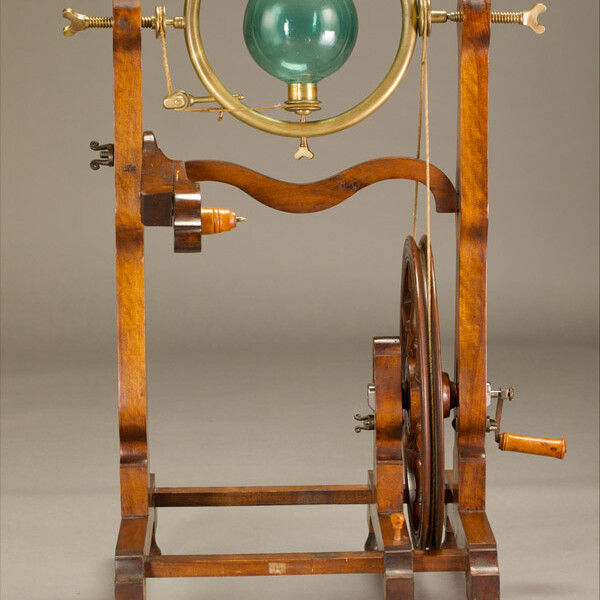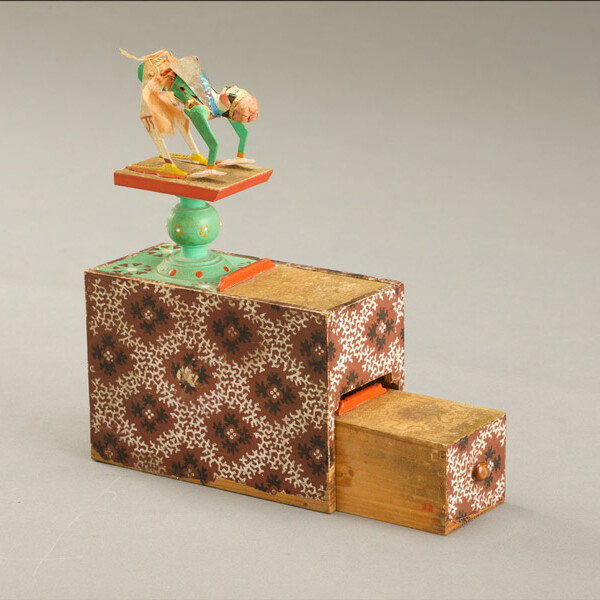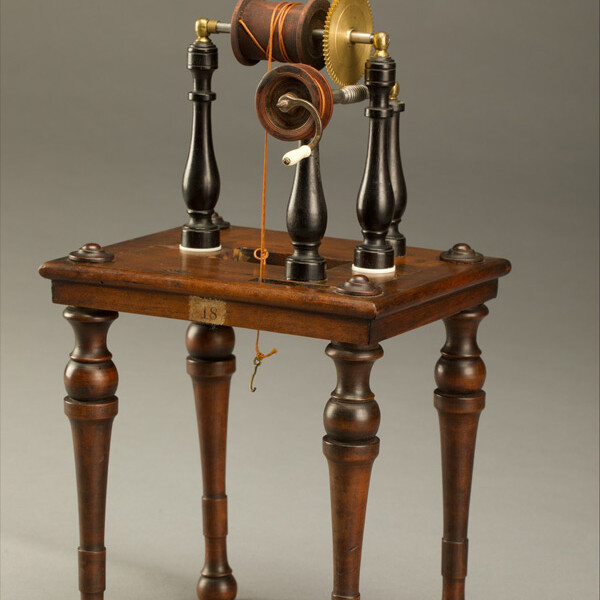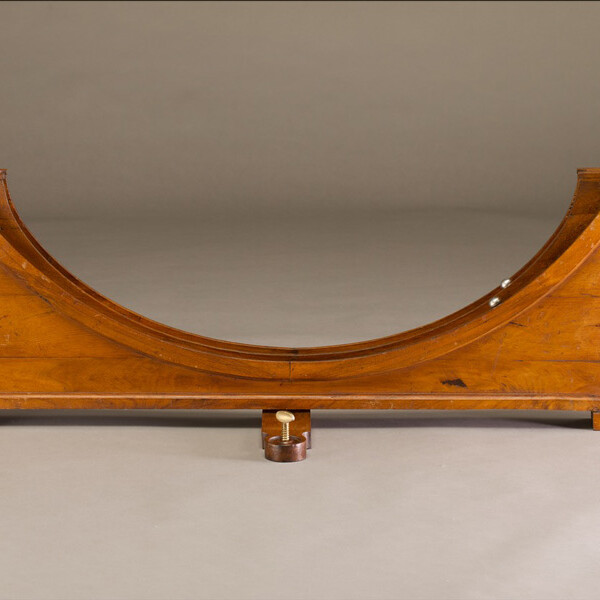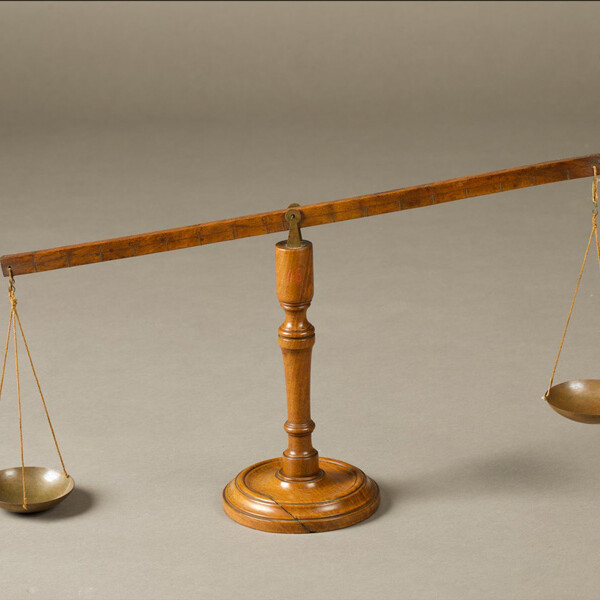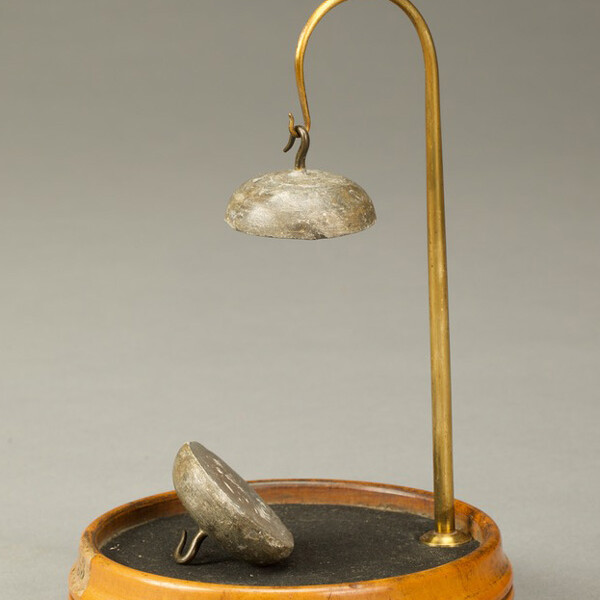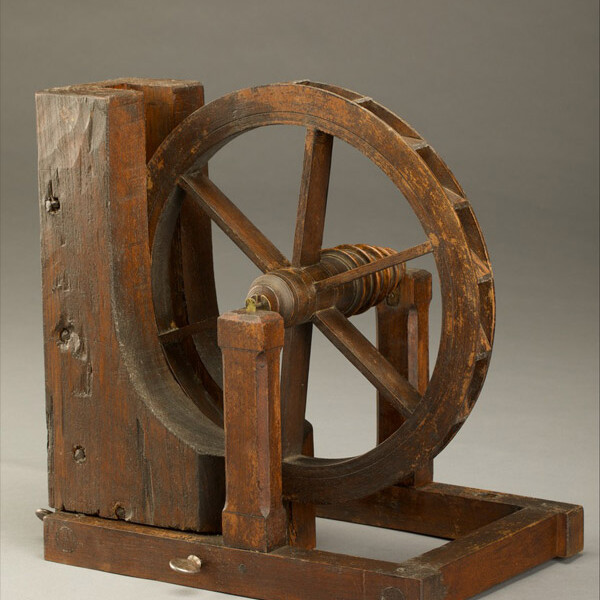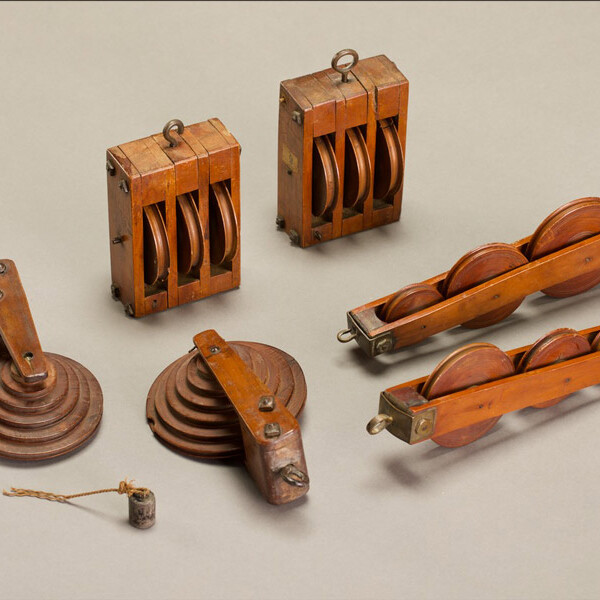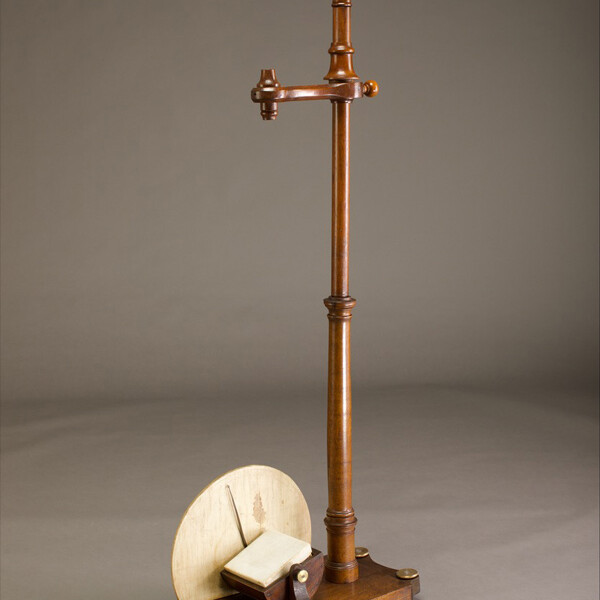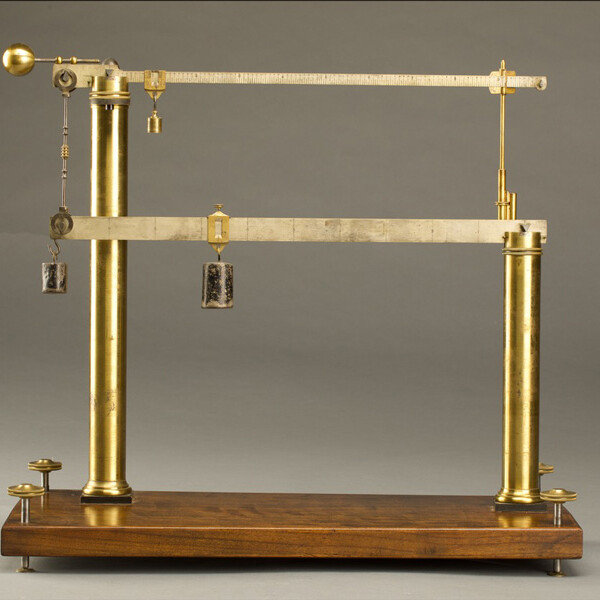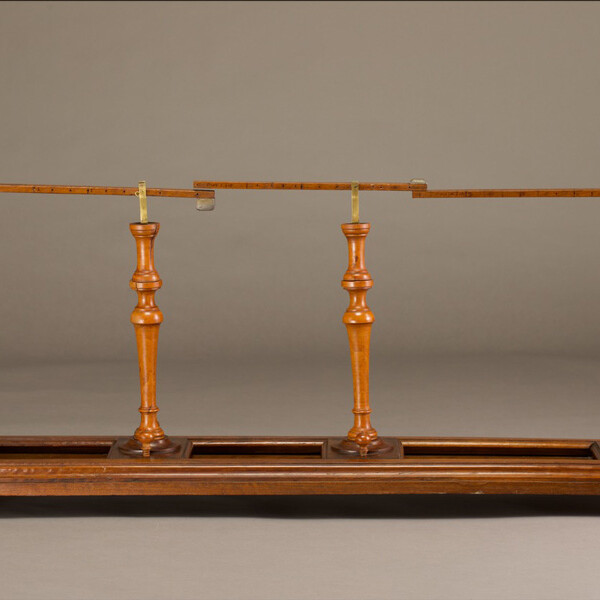The device has two grooves of a quarter-cycloid curve, ending with a straight section. A cycloid is the curve described by a point on the circumference of a disc as it rolls on a plane. The instrument demonstrates that the descent time on the cycloid is always the same, regardless of the height of the starting point.
If two spheres are released at the same time, but from different heights, they reach the end of their paths simultaneously.
This property, discovered by Christiaan Huygens in 1652, was used by him to study the isochronism of the oscillations of a pendulum. Equal swing periods, which in a pendulum are only observed for oscillations of small amplitude, are instead always possible with cycloidal trajectories.
Device on display.
